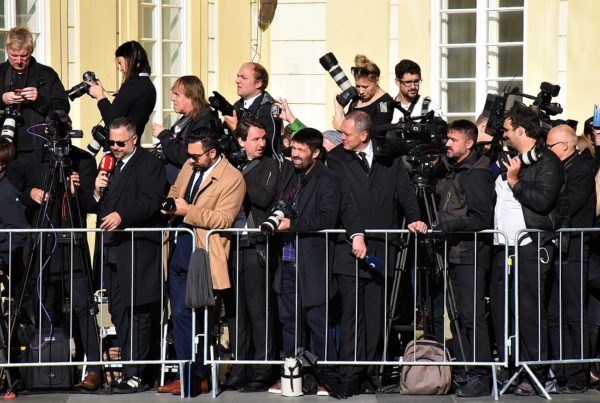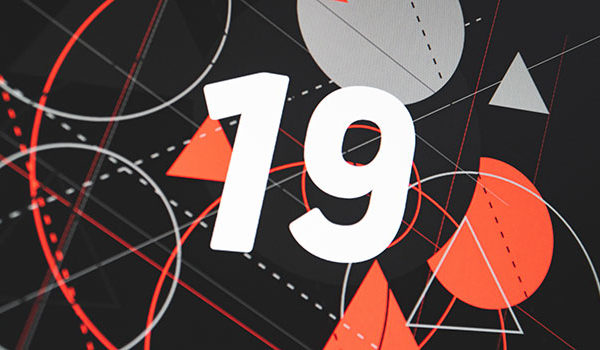Ever since full-blown cases of the disease hit the United States, Canadians have dreaded the contagion’s arrival north of the 49thparallel.
Its effects: blindness and a deadly incapacity to recognize and adapt to reality.
The malady? The White House’s refusal to identify the leading terrorist enemy by name and combatant doctrine.
President Obama began his administration by avoiding counterterror language likely to link Islam with violence. This reflected a civilized and practical impulse to avoid alienating Muslims at home and abroad.
But perhaps influenced by the demonstrable fact that President Obama, as former terror prosecutor Andrew C. McCarthy put it, “made Islamic supremacists key administration advisors,” this effort quickly got out of control. Now the White House fetishizes and enforces on its security agencies, a refusal to identify the doctrine underlying the bulk of the world’s terrorism woes: radical Islamism.
Remarkable, considering that Muslims sounded the alarm years ago.
“Obviously not all Muslims are terrorists but, regrettably, the majority of the terrorists in the world are Muslims,” wrote Abd Al-Rahman Al-Rashed in a 2004 Al-Sharq Al-Awsatarticle flagged by the Middle East Media Research Institute (MEMRI).
Despite this, the Obama White House banned words like “Islamists,” “Muslims” and “jihad” from security documents, even from FBI and other government agencies’ counterterror training manuals.
Lawyer and retired US military intelligence officer Major Stephen C. Coughlin exposed the censorship’s extent at a February 2010 conference. In 2004, he noted, the 9/11 Commission Report made 126 mentions of “jihad,” 145 of “Muslim,” and used the word “Islam” over 300 times. No surprise.
But Washington later purged such terms completely from the FBI counterterrorism lexicon (2008), National Intelligence Strategy (2009) and even the 2010 panel reviewing jihadi Nidal Malik Hasan’s 2009 Fort Hood massacre – except as unavoidable parts of names of terror organizations or the like. The practice seems to continue.
Consequences?
Understanding the threat – extremist Muslims, in this case – requires understanding their doctrine. If terrorists were invoking Christianity – it has happened – security and intelligence organizations would focus on problematic churches and related facilities connected to radical preaching, funding and recruitment. Christian holy literature would be scrutinized, in order to anticipate terrorists’ plans, targets and attack-dates. Redouble the guard on Christmas or Easter? Could atheists, Muslims or Jews be targets? Regardless whether extremists’ interpretations should, in any objective sense, be true or false representations of the ideology in question, serious intelligence must look at these things in order to understand and master the threats posed by all extremist strains of religion or other ideologies. Politicians and the public must discuss them. Public education, transparency, democracy and our defense, demand this. Anything else is misleading, self-deceiving and likely self-defeating.
Northern Exposure
So it was that, three years ago, the Canadian government published the first of its annual series of public threat reports. This straight-talking assessment pinpointed “Sunni Islamist extremism” as a primary menace to Canadians.
But, tragically, the D.C. disease had overtaken Canada’s security bureaucracy by the time August brought the 2014 Public Report On The Terrorist Threat to Canada. This report expunges all direct references to Islamists, other than in terror-organization names.
Take, for example, the latest report’s warning about Canadians joining terror outfits abroad. Gone are terms like “Islamist extremists” and even “violent jihad.” The report’s authors – apparently burdened by “advice” from misguided outreach to Canadian Islamists – slavishly substituted generic terms like “extremist travellers” for language revealing the religious claims, affiliations, motivations and doctrines of our enemies. “Extremist travellers” appears dozens of times to the exclusion of meaningful nomenclature – an editing embarrassment, on top of a national-security one. From the 2014 report:
Europol estimates that between 1,200 and 2,000 European extremist travellers took part in the conflict in Syria in 2013. There appears to be an increase in extremist travellers. This suggests that the threat posed to Europe by returning extremist travellers may be more significant than the threat facing North America because greater numbers of extremist travellers are leaving, then returning to Europe, than are leaving and later returning to North America. This difference between Canada and Europe in numbers of extremist travellers can be attributed to a variety of factors. Regardless, Europe and Canada face a common, interconnected threat from extremist travellers. [Emphasis added.]
In just one paragraph, Canada’s self-censoring report says that many Europeans are “fighting abroad as extremist travellers“; “they attract extremist travellers … and continue to draw European extremist travellers“; there were “European extremist travellers in Syria and other conflict zones”; the “influx of these extremist travellersinto Syria” increases the European terror risk; “an extremist traveller who returned from Syria” allegedly slaughtered several Belgians. (Emphasis added.)
This doubletalk undermines public awareness, public confidence in authorities and the ability of officials and citizens alike to recognize, assess and confront terrorist and subversive enemies and their doctrine.
We saw the absurd far reaches of this self-blinding mentality a few years ago when Canadian police officers at a terrorism news conference thanked “the community” for facilitating an Islamist terrorist take-down. When a journalist asked which community they meant, the officers – not daring to say “Muslim” – all but froze, thawing only enough to become caricatures of stymied stumbling. Because paralyzing PC protocols banned the M-word, the conference ended without the officers having been able explicitly to thank the deserving “Muslim community.”
How has Canada come to this?
Among other sources, Canadian security officials get advice from their federal government’s Cross-Cultural Roundtable on Security. Prominent member Hussein Hamdani reportedly campaigned to drop language implicating things “Islamic.” Meanwhile, Hamdani, the subject of a just-released report by Canada’s Point de Bascule counter extremist research organization, remains vice-chair of the North American Spiritual Revival (NASR) organization. On its website, NASR boasts – as it has done for years – of sponsoring an appearance in Canada by U.S. Imam Siraj Wahhaj, frequently tagged a radical and a 1993 World Trade Center bombingunindicted co-conspirator. Fellow American Muslim Stephen Suleyman Schwartz, executive director of the Center for Islamic Pluralism, once said of Wahhaj: “He’s the No. 1 advocate of radical Islamic ideology among African-Americans. His stuff is very appealing to young Muslims who are on a radical path.”
Hamdani’s NASR also brought American Imam Ziad Shakir to Canada. His disturbingideology, as I’ve written elsewhere, “was condemned by moderate American Muslim leader and retired U.S. naval Lt. Cmdr Zuhdi Jasser, and by the American Anti-Defamation League.” Some have other concerns about Hamdani.
Now comes word that Hamdani, squired by Angus Smith, a Royal Canadian Mounted Police (RCMP) analyst sometimes linked to the censorship policy, will appear on a Montgomery County, Md. panel tomorrow to enlighten Americans about radicalism and the ISIS terror threat.
THE RCMP JOINS FORCES
This isn’t the least of it. Days before the scheduled visit, it was discovered that RCMP outreachers inconceivably had collaborated for months with the National Council of Canadian Muslims (NCCM) in producing “United Against Terrorism,” an erstwhile counter-radicalization handbook. Inconceivably, because NCCM is the renamed Canadian Council on American-Islamic Relations (CAIR-CAN), the Canadian chapter of CAIR, a Saudi-funded U.S. unindicted co-conspirator group. (In its July 2013 name-change announcement, NCCM admitted, with respect to CAIR-CAN, that “We remain the same organization,” leading to suspicions that the adjustment was a cosmetic attempt to kick over documented CAIR-CAN traces to radicalism.)
As for CAIR-CAN/NCCM’s U.S. mother organization: “The [US] Government has produced ample evidence,” concluded the relevant U.S. district court’s decision, “to establish the associations of CAIR, ISNA and NAIT …with Hamas.”
In addition, several senior CAIR staffers and affiliated persons – including CAIR’s former national civil liberties coordinator – have done pen-time for terrorism-related offenses. But the Canadian chapter has yet to condemn publicly and by name the U.S. organization and these convicts, or reveal fully the nature of past or present financial and other dealings with CAIR.
The Islamic Social Services Association (ISSA), led by Shahina Siddiqui, joins the NCCM and RCMP in authorship on the handbook’s cover. Canada’s outreach counter-radicalization world seems to be a small, if not inbred, one, for Siddiqui happens also to be a member of both the NCCM’s board, and the RCMP’s national and Manitoba “diversity” committees.
Another curiosity of authorship involves the only named RCMP official identified in the book’s “Consultants & Contributors” section: “TASLEEM BUDHWANI, PHD, C.PSYCH, Federal Policing Strategy, RCMP.” A profile has this psychologist busy “enhancing partnerships between law enforcement and various sectors including NGOs … in the prevention of individual radicalization to violence.” It is not known what Budhwani’s views would be about national police force involvement with NGOs of the NCCM sort.
As for the handbook, it would ban all the usual terms, even declaring verboten the expression “moderate Muslims,” because, said the authors, the expression is meant to imply that Muslims are not uniformly moderate. Parents are warned to be on the lookout for “External and overt expression of hyper-religiosity that is uncharacteristic of family culture,” although one can only guess what to do, should this hyper-religiosity be altogether characteristic “of family culture.” Elsewhere, the handbook seems a bit too eager to divorce radicalism and intense religiosity from the risk of religious violence. There was also rather too much emphasis, for some tastes, on Muslims’ legal right to avoid cooperating with the RCMP. Readers would also recognize a continuation of the hallmarked NCCM/CAIR-CAN and CAIR campaign to push the generally unconvincing – and increasingly alienating and dangerous – Muslim victimhood narrative. This came replete with familiar attempts to propagate the word “Islamophobia,” a term condemned by moderate Muslims as too-often wielded by Islamists to silence debate.
As Tarek Fatah, a well-known Pakistani-Canadian moderate, wrote, a few years ago:
Canada is a country where Muslims are respected and accommodated like in no other land on Earth, including Saudi Arabia and Iran. It is immoral for the Islamists to slander my country with the slur of Islamophobia. As Statistics Canada has shown, incidents of racism in Canada are far more likely to affect Christian black Canadians and Jewish Canadians than Muslims. …
“However,” he concluded, “truth is the first casualty in this propaganda war being waged against Canada by its own Islamists.”
For all this, the NCCM-ISSA-RCMP handbook then managed to go one better.
“Whom do we consult to gain an accurate understanding of our faith?” it asked. The answer was a list of scholar-interpreters of Islam who could apparently be relied upon in the delicate counter-radicalization context. The list reveals that it is not merely in the censorship department that Islamists have put one over on unduly compliant – and perhaps intimidated – RCMP outreach officers.
Among the recommended scholars, there’s the startlingly hardline Ingrid Mattson(name misspelled in the handbook), former head of the Islamic Society of North America, an unindicted co-conspirator organization that was connected by the already-mentioned district court to Hamas. Mattson’s Islamic chair at Huron University College, Ontario, notoriously benefits from significant radical-Islamic endowments. The scholar was last seen fending off complaints from a student claiming to have been jettisoned from Mattson’s tax-funded classroom because he was non-Muslim.
Then there’s the distinguished Imam Siraj Wahhaj, of the World Trade Center Wahhajs. His patchwork record involves alternately condemning violence and appearing to lust after it. Plus, the unappetizing Ziad Shakir. Not to mention the inevitable Jamal Badawi, former long-time CAIR-CAN/NCCM official. He’s an unindicted co-conspirator his own right, someone who sat on ISNA’s executive board (majlis). Badawi advocates light physical sharia discipline for errant wives. It remains unclear how the Badawi matrimonial approach aligns with the high-thinking and good works of handbooker Shahina Siddiqui and her Islamic Social Services Association.
Such are the moderate sherpas who guide the perplexed up counter-radicalization’s gentle slopes.
No wonder many members of the public reacted with disbelief and disgust to the handbook fiasco. Or that RCMP ranks fell into a mass of post-publication panic and confusion. The day after the handbook’s roll-out, a blushed-out RCMP, getting desperate enquiries from Canada’s now-mortified Office of the Minister of Public Safety, scrambled out a news release. It said that the force was responsible for only one (benign) section of the handbook, and claimed improbably that the “tone” of some of the publication had caused the RCMP to pull out of the project at the last minute. Awfully “last minute,” considering it was the day after launch that the RCMP news release emerged.
Thus, Mountie supremos regard bad “tone” as the actionable offense, rather than content prescribing self-hobbling wartime censorship and jihad-happy fire-breathers as counter-radical consultants. And no explanation why, days later, the handbook still bears the horsemen’s name and logo. Or why the force hadn’t publicly threatened legal action to have their name removed from it. Nor was there a commitment that RCMP HQ would at long last heed warnings, quit self-defeating, hardline-Islamist outreach, and publicly condemn the NCCM and its ilk – in the same way the Canadian prime minister’s own director of communications had condemned NCCM for alleged Hamas-type connections, in January.
Especially in light of the contretemps between the prime minister’s office and NCCM, there is floating over the handbook the unmistakable odor of a settling of accounts, an odor that might make the RCMP commissioner and his boss, the Public Safety minister, queasy about their continuing government employability. It was, after all, their diligence-free outreach that gave NCCM and ISSA the chance to make a fool out of the Prime Minister of Canada. For deep within the little handbook (p.34), comes a warning that law enforcement should never use the term “Islamicism.” In Canada, this ungainly word – never in common use elsewhere, “Islamism” instead prevailing – is almost exclusively associated with a remark by Prime Minister Stephen Harper, one that was condemned by Islamists. “[T]he major threat,” said Harper, in a headline-making 2011 CBC television interview, “is still Islamicism.” The Islamists were riled up by Harper’s effrontery, at the time, and so seem to have incorporated a touch of revenge in the handbook. This would not be the first RCMP outreach-driven embarrassment for a Canadian government, including a mess-up that may have involved an Iranian government operative.
In any event, the more nasty of observers looked at the RCMP’s follow-on news release and wondered. Why, given the embarrassment and damage – and knuckle-rapping insult to their prime minister – did the release pull so many punches? Could this restraint mean that certain senior officials, compromised by outré outreach, were now scared to bear down? Was there a belief that Islamist “partners” should not be alienated, lest they be tempted to expose details of years of misguided interaction upon which certain RCMP executives had built careers?
The answer remains a mystery. But skeptical interpretations became more plausible to some, when the force’s non-condemnatory news release came out more or less simultaneously with an NCCM release saluting RCMP cooperation with the Islamist group. Had all the loose liaising achieved the ultimate inversion, with the RCMP – and through it, the government – being turned into strange victims in a counter-radicalization Stockholm syndrome? Why, for that matter, are reliably moderate Canadian Muslim organizations like Muslims Facing Tomorrow and the Muslim Canadian Congress, enjoying hardly a fraction of the reinforcing, and capacity-building attentions splashed all over Islamists?
So, did the RCMP realize that it would be taken to the cleaners, and wind up helping NCCM and ISSA launder language and radicals via a counter-radicalization handbook? Maybe. But perhaps self-stifling in national security is now so internalized in the United States and Canada that it never occurs to some that certain people are radicals, and that radicals are not always our friends. Or the best guides to counter radicalization.
Burgeoning threats mean that citizens must press Washington and Ottawa to return to good sense, and put a stop to the deadly contagion of self-censorship and self-deceit – and worse – now hazarding national security and public safety.
Americans and Canadians must defeat the disease by curing their thinking.
A lawyer with 30 years’ experience in intelligence affairs, David B. Harris is director of the International Intelligence Program, INSIGNIS Strategic Research Inc, Ottawa, Canada. The author is not responsible for the accuracy of, or views conveyed in, material in the links provided.
This article was originally published by IPT The Investigative Project on Terrorism on October 7, 2014
http://www.investigativeproject.org/4602/guest-column-terror-virus-on-the-northern-border#.VDRJfEHLAbQ.twitter








